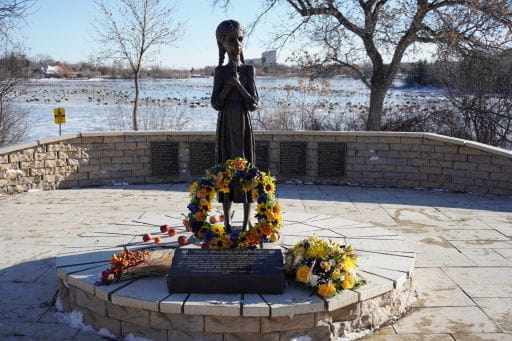Released on November 19, 2024
During a special service at the Legislative Building today, Premier Scott Moe and MLAs joined with members of the province's Ukrainian community to commemorate the millions who died during the 1932-33 famine in Ukraine.
“Holodomor, The Great Famine, is still present in the hearts and minds of the Ukrainian community over 90 years later,” Honorary Consul of Ukraine Ken Krawetz said. “We join our Saskatchewan citizens of Ukrainian heritage and those across the globe, to remember this dark time and honour those lost.”
The word Holodomor means "extermination by hunger" in the Ukrainian language. The service was held in solidarity with Holodomor Memorial Week; a memorial candle was lit and will remain lit throughout the week to represent unity with those around the world marking the Holodomor genocide.

In 1932 and 1933, the man-made famine engineered by the Soviet government resulted in the deaths of millions of people through starvation and deprivation. Crops were confiscated and regulations were imposed preventing people from leaving their communities in search of food.
An exact reproduction of the statue, entitled "Bitter Memories of Childhood" by sculptor Preto Drozdowsky, of a young, starving peasant girl clutching a wheat sheaf, was dedicated on the grounds of the Wascana Centre in 2015. The original statue still stands in the National Museum of the Holodomor-Genocide in Kyiv, Ukraine.
The statue is located southeast of the Legislative Building on Lakeshore Drive, serving as a permanent reminder of the tragedy.
Saskatchewan was the first jurisdiction in North America to recognize this genocide with the passing of The Ukrainian Famine and Genocide (Holodomor) Memorial Day Act in 2008.
International Holodomor Day is recognized on the fourth Saturday of November and, this year, falls on November 23, 2024.
-30-
For more information, contact:

